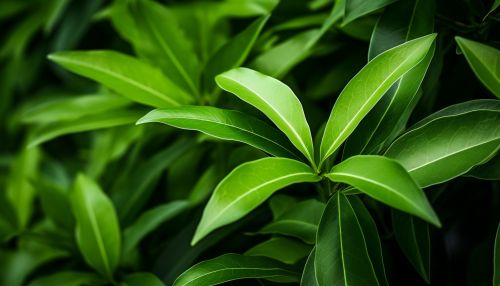Mechanisms of Plant Defense Mechanisms Against Pests
Introduction
Plants, unlike mobile organisms, cannot physically move away from harmful conditions or threats. As a result, they have developed a variety of defense mechanisms to protect themselves from pests. These mechanisms can be broadly classified into two categories: constitutive defenses, which are always present in the plant, and induced defenses, which are triggered in response to pest attack or environmental stress.


Constitutive Defenses
Constitutive defenses are the plant's first line of defense against pests. These include physical barriers such as the plant's cuticle and cell wall, as well as chemical defenses such as secondary metabolites that deter pests.
Physical Barriers
The plant's cuticle, a waxy layer that covers the surface of the plant, acts as a physical barrier against pests. It prevents pests from reaching the plant's tissues and also reduces water loss, which can be beneficial in times of drought. The plant's cell wall also provides a physical barrier against pests. It is composed of cellulose, hemicellulose, and lignin, which are difficult for most pests to digest.
Chemical Defenses
Plants produce a wide variety of secondary metabolites that act as chemical defenses against pests. These include alkaloids, terpenoids, and phenolics, among others. These compounds can deter pests by making the plant taste bad, or they can be toxic to the pest. Some plants also produce compounds that attract natural enemies of the pest, a strategy known as indirect defense.
Induced Defenses
While constitutive defenses are always present in the plant, induced defenses are triggered in response to pest attack or environmental stress. These defenses can be local, affecting only the part of the plant where the pest attack occurred, or systemic, affecting the entire plant.
Local Induced Defenses
Local induced defenses are triggered by damage to the plant's tissues. This damage can be caused by a pest feeding on the plant, or by environmental stress such as drought or high temperatures. When damage occurs, the plant produces a burst of reactive oxygen species (ROS), which signal the plant to increase its defenses. This can include producing more secondary metabolites, thickening the cell wall, or producing proteins that inhibit the pest's digestive enzymes.
Systemic Induced Defenses
Systemic induced defenses are triggered when a pest attack or environmental stress is severe enough to affect the entire plant. These defenses involve the production of systemic acquired resistance (SAR) and induced systemic resistance (ISR). SAR is triggered by a localized infection and leads to increased resistance throughout the plant. ISR, on the other hand, is triggered by beneficial microbes in the plant's root system and also leads to increased resistance throughout the plant.
Conclusion
Understanding the mechanisms of plant defense against pests is crucial for developing sustainable pest management strategies. By harnessing these natural defense mechanisms, we can reduce our reliance on synthetic pesticides and create more sustainable agricultural systems.
